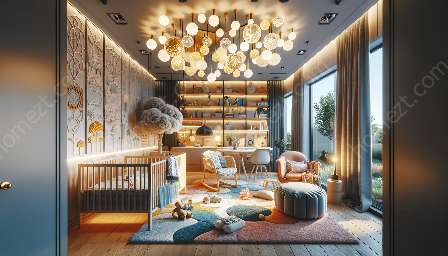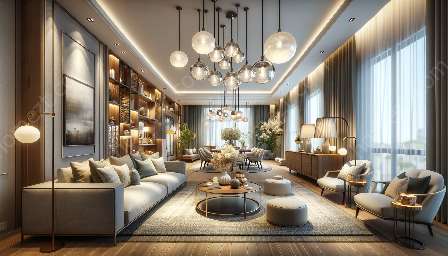Artificial lighting plays a crucial role in creating a welcoming and engaging atmosphere in nursery and playroom spaces. Whether it's for practical illumination or enhancing the overall ambiance, understanding the impact of artificial lighting is essential for designing a functional and aesthetically pleasing environment that supports children's activities. This topic cluster explores various aspects of artificial lighting, its compatibility with nursery and playroom design, and provides insights and tips to help you make informed decisions when it comes to lighting up these spaces.
The Importance of Lighting in Nursery and Playroom Design
Lighting is a fundamental element in any interior design plan, and when it comes to nursery and playroom spaces, its significance is even more pronounced. Well-designed lighting can contribute to creating a safe, comfortable, and stimulating environment for children to play, learn, and relax in. From creating a cozy reading nook to ensuring sufficient task lighting for play activities, a thoughtful approach to lighting design can significantly impact the functionality and aesthetics of these spaces.
Types of Artificial Lighting
When considering artificial lighting for nursery and playroom spaces, it's important to explore different types of lighting available to cater to various needs and design preferences. Some common types of artificial lighting include:
- Overhead Lighting: This includes ceiling-mounted fixtures, such as chandeliers, flush mount lights, and pendant lights, which provide general illumination throughout the space.
- Task Lighting: Task lighting is essential for specific activities, such as reading, drawing, or playing games. Table lamps, floor lamps, and adjustable spotlights are examples of task lighting options.
- Accent Lighting: Accent lighting highlights specific features or areas within the room, adding visual interest and ambiance. This can include wall sconces, track lighting, or LED strip lights.
- Natural Lighting: While not artificial, natural lighting from windows and skylights also plays a vital role in creating a healthy and vibrant environment in nursery and playroom spaces.
The Benefits of Proper Lighting in Nursery and Playroom Spaces
Optimally designed artificial lighting offers numerous benefits in nursery and playroom settings. These include:
- Enhanced Safety: Proper lighting helps minimize trip hazards and ensures that children can move around safely.
- Promotion of Learning and Creativity: Well-lit spaces can stimulate children's cognitive abilities, foster creativity, and encourage exploration and learning through play.
- Mood Enhancement: Appropriate lighting can create a soothing, inviting atmosphere for relaxation and bedtime routines, as well as an energizing environment for active play.
- Visual Comfort: Well-distributed and balanced lighting reduces eye strain and enhances visual comfort for both children and adults.
- Aesthetic Appeal: Thoughtfully chosen lighting fixtures and designs can add a decorative and visually appealing element to the overall decor of the nursery and playroom.
Safety Considerations for Child-Friendly Lighting
When selecting and installing artificial lighting in nursery and playroom spaces, it's crucial to prioritize safety. Some key safety considerations include:
- Choosing Child-Safe Fixtures: Opt for lighting fixtures with no sharp edges, cords that are out of reach, and secure installation to prevent accidents.
- Control and Accessibility: Ensure that light switches and controls are easily reachable for both children and adults and consider using dimmers to adjust light levels based on activities and time of day.
- Proper Wiring and Installation: Seek professional installation to ensure that electrical wirings and fixtures comply with safety standards and local regulations.
- Heat Emission: Be mindful of heat-producing fixtures and bulbs to prevent accidental burns or discomfort.
Creating an Inviting and Stimulating Lighting Scheme
To foster a positive and engaging atmosphere in nursery and playroom spaces, consider the following tips for creating an inviting and stimulating lighting scheme:
- Layered Lighting: Combine overhead, task, and accent lighting to achieve a balanced and versatile lighting scheme that caters to different activities and moods.
- Color Temperature: Choose lighting with the appropriate color temperature to create a warm and comfortable feel, promoting relaxation while also allowing for focused tasks and play.
- Adjustable Lighting: Provide options for adjusting light intensity and direction to accommodate various activities, such as reading, crafting, or imaginative play.
- Nighttime Lighting: Incorporate soft, low-level lighting for nighttime routines, such as bedtime stories or soothing bedtime ambiance.
Conclusion
Artificial lighting is a vital component of nursery and playroom design, significantly influencing the functionality, safety, and aesthetic appeal of these spaces. By understanding the different types of artificial lighting, its benefits, safety considerations, and tips for creating an inviting and stimulating lighting scheme, you can make informed decisions and design a space that supports children's development and enjoyment.



